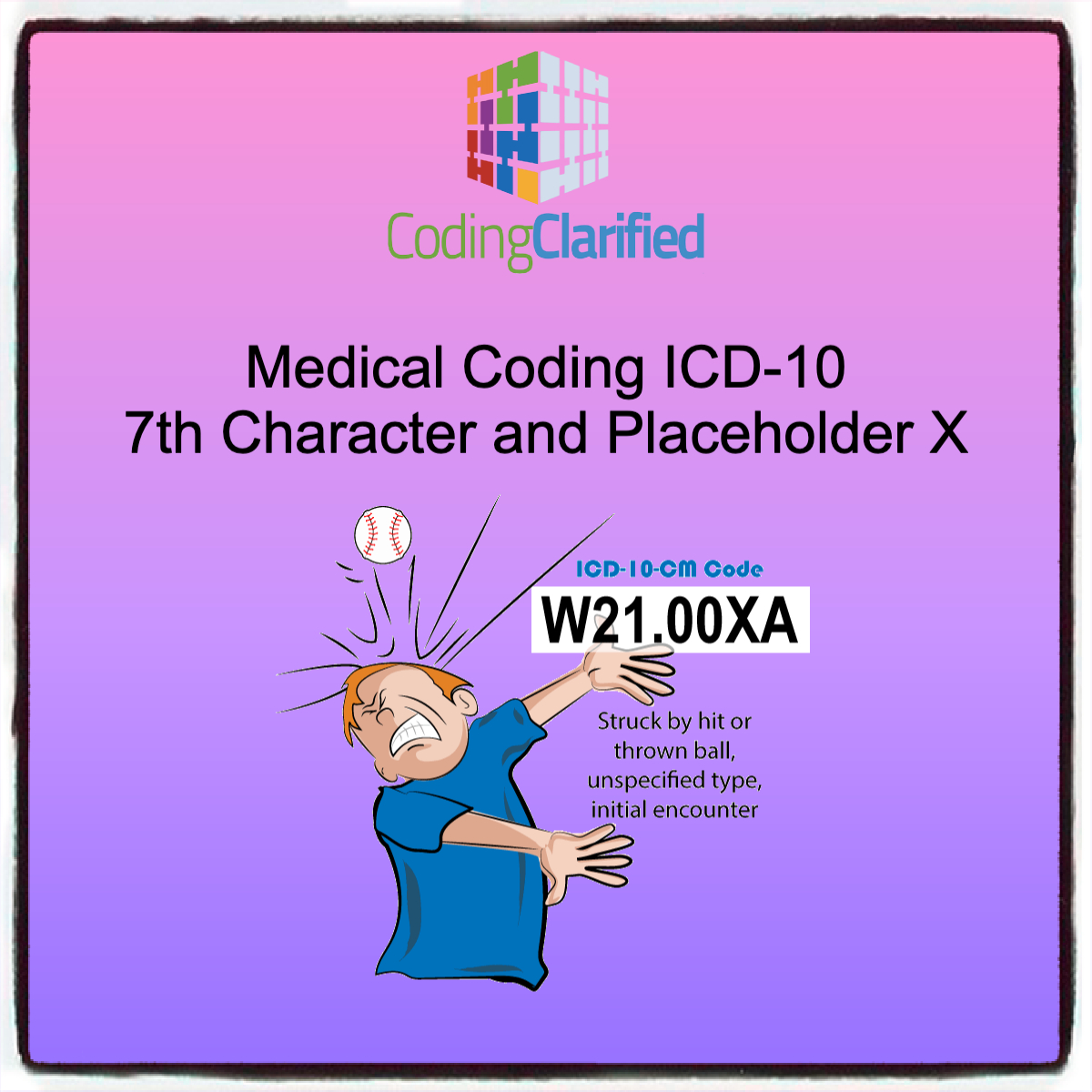7th Character
The 7th character is an important component in ICD-10-CM and is required for certain codes, particularly for injuries, fractures, and some other conditions. It provides additional information about the encounter or the stage of the condition. The 7th character is used in the following situations:
- Fractures: For certain types of fractures, the 7th character denotes the encounter type and the status of the fracture. The 7th character should be appended to the end of the code when the fracture code has a 7th character requirement.
- A – Initial encounter for fracture (when the patient is receiving active treatment for the injury).
- B – Subsequent encounter for fracture with routine healing.
- C – Subsequent encounter for fracture with delayed healing.
- D – Subsequent encounter for fracture with nonunion.
- E – Subsequent encounter for fracture with malunion.
- F – Subsequent encounter for fracture with other complications.
- G – Sequela (used for complications or conditions that arise as a result of the injury).
- Injuries: For some injury-related diagnoses, the 7th character is used to indicate the nature of the encounter, such as whether it is the initial or subsequent treatment phase, or if complications are present.
- Other conditions: Certain other categories like burns, poisoning, or other conditions may require the use of the 7th character to specify the stage of the condition or the treatment phase. https://codingclarified.com/medical-coding-fractures/
Placeholder “X”
The placeholder “X” is used in ICD-10 to maintain the correct code structure when a code requires a 7th character but the full 7-character length is not necessary. It ensures that the code length is correct, especially when a 7-character code format is required for certain categories (e.g., injury codes).
The “X” is typically used in the following situations:
- To fill in spaces for a missing character: When a 7-character code format is required, but the code doesn’t require all seven characters, the “X” is inserted to maintain the required length of the code. For example, if a 6-character code is needed, but the system expects a 7-character code, an “X” is added as a placeholder.Example:
- S00.91X: A code with the placeholder “X” where a 7-character code format is required but the “X” is used to fill in a space.
- In some codes that don’t require a 7th character but need to comply with the format.
Important Notes:
- The 7th character and placeholder “X” are specific to certain ICD-10-CM codes and are not applicable to all diagnoses.
- Not all ICD-10 codes need a 7th character, so it’s important to verify the specific guidelines for the diagnosis being coded.
- The “X” placeholder does not change the meaning of the diagnosis; it is used solely to meet the format requirements.
Example of 7th Character in Use (Fracture Codes):
- S52.501A – Unspecified fracture of the right radius, initial encounter for fracture.
- S52.501D – Unspecified fracture of the right radius, subsequent encounter for fracture with routine healing.
Example of Placeholder “X” in Use:
- S00.91X – Injury, unspecified of the face (when a 7th character is required but no specific code for the 7th character).
Understanding these coding guidelines is crucial for accurate and compliant medical coding, especially when handling trauma, injury, or fracture codes in ICD-10. Always refer to the most recent ICD-10 manual or coding software for precise guidance.
https://codingclarified.com/medical-coding-steps-for-icd-10-cm/

